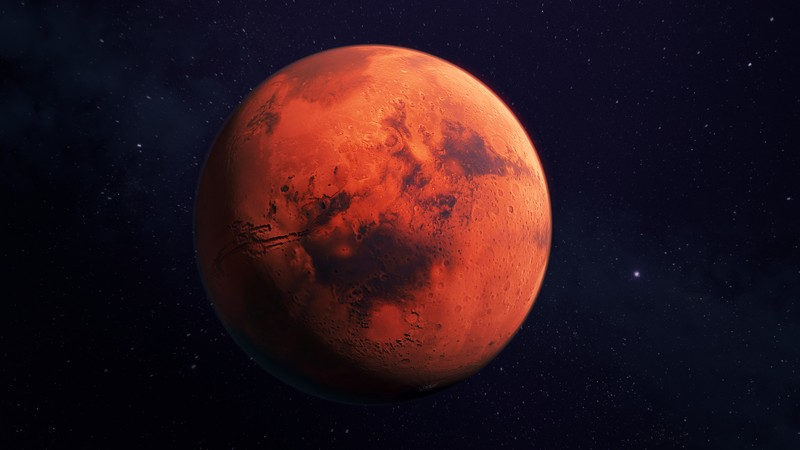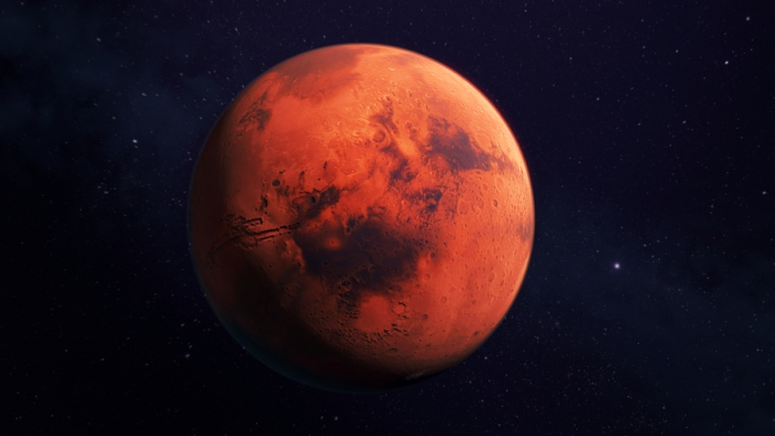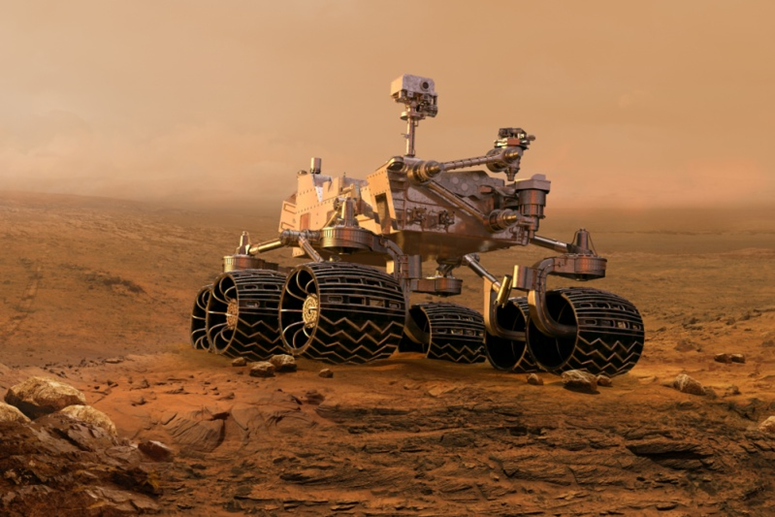?Six evidence of the impossibility of life on it.. Why was “Mars” called the “Red Planet”

The world outside Earth has always been an unknown world for many. We often hear about the red planet, but we do not know what it is, but in this report we will provide you with all the information that will definitely help you understand the world of space.
?What is the Red Planet

Ranking of the red planet in the solar system Ranking of the red planet in the solar system - Source: Shutterstock
Mars is often called the "Red Planet" because it appears in the sky as an orange-red star. Some believe that this name goes back to the Greeks and Romans, who gave this name to the planet after the god of war.
Today, thanks to exploration missions to Mars, we know that this name is due to rust in Martian rocks.
Mars is the fourth planet in the solar system.
It orbits the sun at an average distance of 228 million kilometres, half the distance of Earth, so human visitors will find it very cold.
Although summers near the equator can be very warm, the average temperature is minus 63 degrees Celsius, similar to Antarctic winters.
The night is also very cold.
?Why is Mars red

The Red Planet from a spacecraftThe Red Planet - Source: Shutterstock
Mars is called the “Red Planet” for two reasons: one is the planet’s surface and the other is its atmosphere:
Surface
The surface of the Red Planet is covered with iron oxide particles (iron oxide is the same compound that gives rust its red color).
Mars has a lot of iron oxide on its surface because the planet is smaller and has weaker gravity than Earth.
When the planets were forming about four billion years ago, their surfaces were made of hellish oceans of molten rock and minerals including natural iron oxide.
The Earth's size was larger and its gravity stronger, which explains why Earth did not appear as red as Mars, if the iron oxide that was floating on the planet's surface due to the high temperature turned into a liquid and sank into the planet's core.
Being smaller, it did not achieve the same temperatures.
Iron oxide remained stable, did not sink as much, and as a result is more widespread around the planet today.
This explanation goes back to a study conducted by David Ruby and his colleagues at the University of Bayreuth, Germany, in 2004.

Atmosphere
The second reason for Mars' redness is its atmosphere.
The Martian atmosphere was extensively analyzed by NASA's Curiosity rover, which landed on the red planet in 2012.
Scientists found that the Martian atmosphere on the surface consists of 95% carbon dioxide, 2.6% nitrogen, 1.9% argon, 0.16% oxygen, and 0.06% carbon monoxide.
Mars' atmosphere appears red because much of the planet's iron oxide dust is blown away in massive storms.
These dust storms occur every year, and some are so large that they cover areas the size of continents and can last for weeks at a time.
Another reason why Mars' atmosphere appears red is more complex, and involves the way sunlight reflects away from the planet: the thinness of the red planet's atmosphere compared to Earth's, which is one of the reasons why humans are unable to survive there without a spacesuit.
Because of this thin atmosphere, sunlight reflecting away from Mars appears red due to a phenomenon known as “Rayleigh.”
Information about the red planet

There are many questions that come to mind about the planet Mars, which prompts us to provide information about the red planet to provide you with the answers you need.
?When did man discover the red planet
Humans have been studying Mars since ancient times, and about 50 years after the invention of the telescope, Christian Huygens made the first map of Mars in 1659, through the Mariner 4 spacecraft, which passed 10,000 kilometers (6,000 miles) from Mars. The first close-up photos of the planet were taken in hopes of finding intelligent life on Mars.
?When is the best time to see the red planet
There are many changes that affect the appearance of the Red Planet, the most notable of which is the variation in distance from planet Earth.
The planet Mars appears at its best and appears as a bright body in the sky with a fiery red light that has dazzled millions of people throughout human history.
At its worst, it appears dark in color and is almost unnoticeable.
How many moons does Mars have?

Mars has two natural moons, which are small, irregularly shaped rocks or perhaps asteroids that have become trapped in orbit around the planet.
Both were discovered in August 1877.
The larger moon, Phobos, is located close to Mars and revolves around the planet quickly. The smaller moon, Deimos, is located far from Mars' orbit.
Every year, the moon Phobos approaches Mars by about 1.8 cm. Eventually, millions of years from now, it will collide with Mars, or perhaps break up into small pieces and form a ring of debris around the planet.

?What is the estimated day and year on Mars
The average length of a day on the Red Planet is 24 hours, 39 minutes and 35 seconds.
When the first spacecraft began operating on Mars in the 1970s, planetary scientists began using the word "sol" to refer to a solar day on Mars.
While the tropical year on Mars is about 687 Earth days.
?Is there life on Mars

It was believed that there was life on the planet Mars, which led to many researches being conducted to reach an answer, and the results of the research resulted in the following:
1- The famous “Viking” missions to the red planet in the late 1990s found the presence of organic materials in a sample taken from Mars when it was heated. However, there are many results that the mission reached that have not been revealed until this time, but when it was The launch of the Viking rover did not reveal any organic materials, which supports the theory that there is no life on Mars.
2- Speculation about the existence of life on Mars is based on the oceans that covered the surface of the planet in ancient times, which means that there could be life.
3- Despite the nature of Mars’ composition of rocks and minerals, there are some researchers who have indicated the possibility of finding water in the interior of the planet, which makes it the first steps that qualify for the establishment of life on the planet.
5- One of the characteristics of Mars is its low temperatures, which humans cannot tolerate.
6- Weak gravity on the surface of Mars, which constitutes about 38% of Earth’s gravity, which makes standing on its surface difficult.

From here we conclude that it is possible that one day there will be life on Mars, but at the present time humans cannot live on this planet.
Source: websites

